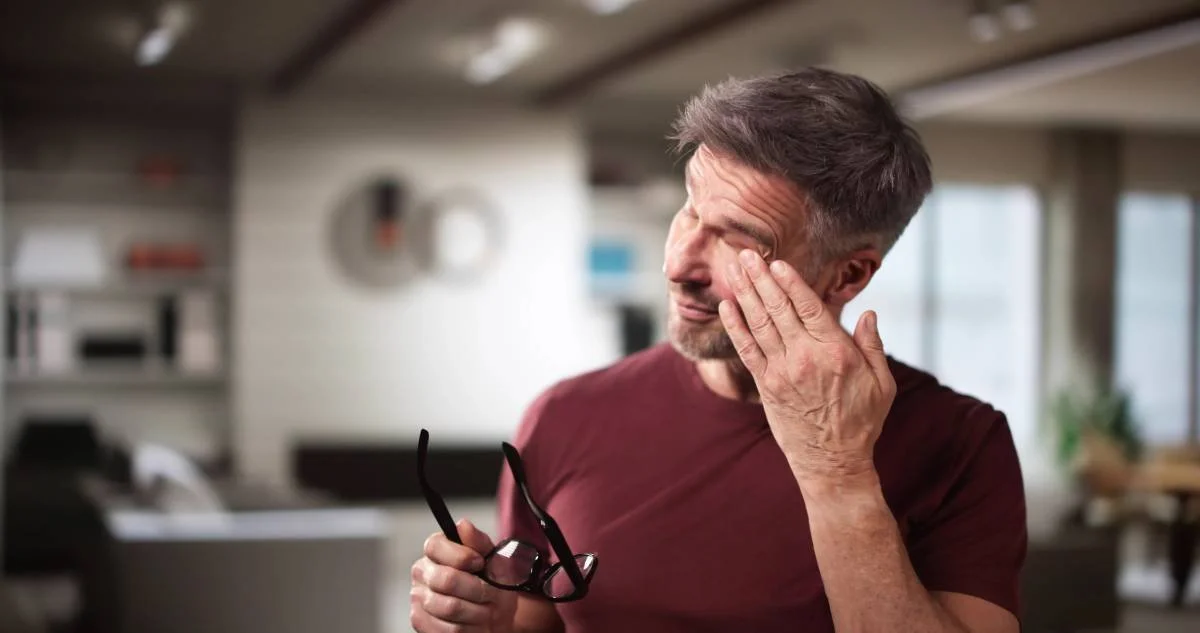Dry Eye Symptoms: When It’s More Than Just Irritation
If you frequently experience dry eye symptoms, such as blurred vision or eye redness, the cause may be more than just simple irritation. When the eyes do not produce enough tears, dry eye symptoms occur.
Although irritating, the cause could be more serious than expected if symptoms persist. For instance, if dry eyes are not treated, it may damage the cornea.
Dry eyes are common, but can be uncomfortable. Dry eye treatment may be necessary to prevent further damage to your eye.
The Cause of Dry Eye Symptoms
Typically, dry eye symptoms occur when there are issues with the tear glands. The water produced by your glands stops, creating dry eye symptoms. When this takes place, the cause of dry eye can be due to the following:
The tears evaporate too quickly.
The glands do not make enough tears for the eyes to maintain wetness.
The glands do not function properly to keep the eyes adequately moist.
Additionally, other factors may contribute to dry eyes. These causes include:
Smoking or vaping
Windy or dry environments
Health problems such as autoimmune disorders, thyroid issues, or diabetes
Staring at screens for too long
Certain medications for depression, glaucoma, allergies, pain, and blood pressure
To receive help in determining the underlying cause of your dry eyes, speak with your doctor.
A List of Dry Eye Symptoms
The symptoms associated with dry eyes can be irritating and bothersome to the point of interrupting your daily life. Whether you struggle with itchiness or red eyes, symptoms can be uncomfortable.
According to the National Eye Institute, there are several symptoms of dry eye. Some of the symptoms you may experience include:
Eye fatigue
Burning or stinging feelings in the eye
Sensitivity to light
Blurry vision
Difficulty wearing contact lenses
Dry or scratchy sensations in the eye
Red eyes
Gritty or sandy sensations in the eye
Difficulty driving at night
Dry eye symptoms can range in severity depending on the severity of your diagnosis and the quality of your eye health. Symptoms may worsen when treatment is avoided. For instance, a range of complications can occur, such as:
Scarring of the cornea
Eye infections
Corneal ulcers
Vision impairment
Continuous eye irritation
Complications can be severe and may cause permanent damage to certain parts of the eye. Although anyone can develop dry eye symptoms, certain individuals may be at a higher risk.
Who is at Risk of Experiencing Dry Eye Symptoms?
When tear glands are not operating correctly, you may be more at risk of developing dry eyes. Those more at risk for dry eye consist of:
People who wear contact lenses
Females
People who have a vitamin A deficiency
People with medical conditions such as autoimmune disorders, neurological disorders, and endocrine conditions
People age 50 or older
If you fall into any of the above categories, you may be more at risk of developing dry eye symptoms. Persistent eye issues should be treated by a healthcare professional.
How to Treat Dry Eye Symptoms
If you experience dry eye symptoms, several treatment options are available to consider. You can try over-the-counter eye drops, which can provide relief, add lubrication, and reduce redness.
Additionally, lifestyle changes can be beneficial. For better eye health, it is recommended to limit screen time, use a humidifier, and avoid windy environments, including strong air conditioning.
These types of treatments can ease symptoms, but to maintain eye health, those concerned should receive a dry eye exam to determine the cause of any ocular issues. Doctors may suggest prescription medications, ointments that provide a thicker lubricant, or tear duct plugs. In extreme cases, surgery may be necessary.
Manage Dry Eye Symptoms Today
If you struggle with dry eye symptoms, reach out to Aloha Eye Clinic. We work closely with patients to improve vision and eye health. Contact our eye care clinic and surgery center today to schedule an appointment for an eye exam. We can also provide you with more information on how to manage dry eye symptoms.


